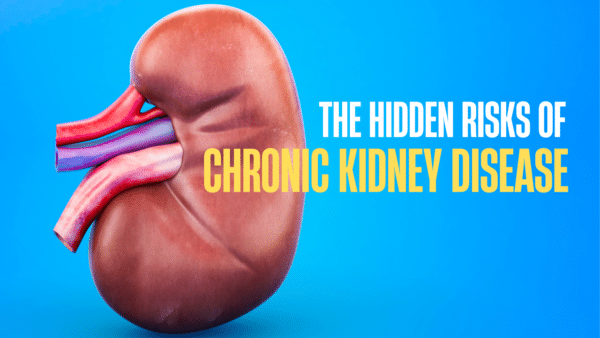What is a D-Dimer blood test?
Simply put, a D-Dimer blood test detects or helps rule out the presence of a blood clot. A blood clot is a clump of blood that is necessary to prevent you from losing too much blood when dealing with injuries. Scientifically, the D-Dimer blood test measures the amount of protein called “fibrin D-Dimer.” Fibrin D-Dimer is produced whenever Fibrin, a protein that is a chief component of a blood clot, is being actively degraded within the vascular system.
Blood clotting is a complex process that involves the activation of circulating proteins that produce long strands of fibrin. Blood clots usually form to prevent blood leaks (hemorrhage) from a damaged blood vessel caused by wounds or injuries. The resulting clot that plugs the leak is mainly made up of fibrin strands tangled together with blood platelets entangled within the fibrin mass. As part of the healing process, clots that are formed begin to break down almost as soon as they are formed. This process of finely balanced clot formation and the simultaneous initiation of clot breakdown called fibrinolysis is important, as it limits the size of the clot to prevent it from completely blocking the blood vessel it is trying to repair. A protein called plasmin mediates and limits the growth of forming a blood clot by degrading the edges of the blood clot.
Since fibrin formation and degradation simultaneously occur with active blood clots, the amount of D-Dimer (Fibrin degradation by-products or FDPs, found in the blood reflects the amount of active blood clot formation that is occurring in the body.
When is a D-Dimer ordered?
D-Dimer testing is often ordered when a patient exhibits signs of a serious condition and is sometimes rushed to the emergency room.
Symptoms exhibited may be linked to a deep vein (leg pain or tenderness, leg swelling, and discoloration of the leg), pulmonary embolism (sudden shortness of breath, labored breathing, coughing, lung-related chest pain, and rapid heart rate), and disseminated intravascular coagulation (bleeding gums, nausea, vomiting, severe muscle and abdominal pain, seizures, and decreased urine output).
A D-Dimer blood test may be ordered, along with a PT, fibrinogen, and platelet count to help accurately diagnose the condition.
What happens during the test?
It is a quick way to help rule out abnormal or excess clotting as the underlying cause. The test administrator, physician or nurse, collects blood samples from the patient. The sample must be collected into 0.9% sodium citrate like all other routine coagulation tests. The sample must be spun down, and the platelet poor plasma removed. The test is then performed on the plasma.
Why do I need one?
Your physician may recommend that you take the D-Dimer test as it can be useful in detecting if there is an unusual degree of D-Dimer blood clotting happening in your body. It is mainly used for three purposes. First, is to screen for underlying thromboembolic events, second is to assist in the laboratory diagnosis in treating underlying Disseminated Intravascular Coagulopathy (DIC), and last is to assess the response to therapeutic fibrinolysis. All these will be further discussed below.
Since D-Dimer is only generated from cross-linked fibrin, its presence is an indication that clot formation (thrombosis) has occurred. D-Dimers are therefore used as a screening test for underlying thrombosis and embolism. Embolization refers to the process whereby a blood clot that forms at a local site becomes free and is swept downstream and subsequently gets trapped in a smaller vessel causing an obstruction. This relocated obstruction is then referred to as an embolus. The most common condition for this is Pulmonary Embolus (PE).
The D-Dimer blood test is most effective in identifying or ruling out if Pulmonary Embolus (PE) or Deep Vein Thrombosis (DVT) is present, but it can also be used to detect other medical conditions.
Pulmonary Embolism (PE)
Pulmonary embolism (PE) is caused by a D-Dimer blood clot that becomes stuck in the pulmonary artery, which is the main blood vessel heading to the lungs. This results in a decrease in blood flow downstream of the clot. While some patients can have mild pulmonary embolism that causes few symptoms, others can have severe pulmonary embolism blocking the main pulmonary artery or arteries.
People who have PE improve with treatment, but up to 3% of those who have untreated PE do not survive. If medically treated, the mortality rate is around 8%. Hence it would be significantly helpful to identify these cases early on. One way to do this to take the test.
People with Pulmonary Embolus (PE) will have an elevated D-Dimer level. However, this test can only be accurate if you are not likely to have blood clots. Since there are other factors that can cause higher D-Dimer levels, other tests may be needed by your physician.
Deep Vein Thrombosis (DVT)
A DVT is a D-Dimer blood clot in the deep venous system in the arms but mostly located in the legs. Symptoms can include erythema, pain, swelling, and increased warmth of the affected extremity.
The D-Dimer test is also used to assist in the diagnosis of an underlying Disseminated Intravascular Coagulation (DIC). DIC is a complex condition in which widespread blood clot formation occurs throughout the body. This can be caused by a variety of serious medical conditions. It is difficult to treat and fatal in severe cases.
Lastly, the D-Dimer test assesses the response to therapeutic fibrinolysis. Similar to DIC, hyperfibrinolysis is another type of D-Dimer blood clotting disorder. It is associated with the same kinds of underlying medical conditions. Under conditions where a thrombosis is life threatening, medications are used to speed up the fibrinolytic process. The D-Dimer test is used to monitor the effectiveness of therapeutic fibrinolysis in such cases.
D-Dimer and Cancer
Most Cancer patients have abnormal D-Dimer levels based on the given cut-off. D-Dimer level in cancer patients is associated with the risk of thromboembolism and deep venous thrombosis (DVT). Research shows that in conclusion, the D-Dimer levels in cancer is dependent on patient age, tumor primary site, and tumor stage.
What does the result mean?
To determine a strict threshold between the normal and abnormal amount of D-Dimer level is difficult as our bodies generally produce certain amounts of microtrauma to blood vessels that can lead to the creation of D-Dimer blood clots. In order to estimate the threshold for the same, laboratories have had to rely on population statistics. A D-Dimer level of 500 nanograms per milliliter or higher is considered as abnormal in most laboratories.
Reference values
To be able to interpret the results, one must know the cut-off for the unit of measure used in reporting. The results may be expressed as either D-Dimer units or Fibrinogen Equivalent Units (FEU) depending on specific sets of reagents. To put it simply, 1 D-Dimer unit is equal to 2 FEUs. Hence, the cut-off of 500 ng/mL FEU is equal to 250 ng/mL D-Dimer units.
If the D-Dimer level is below the cut-off, this means that the level of D-Dimer is normal or “negative” which means that it is most likely that the person tested does not have an acute condition or disease-causing abnormal clot formation and breakdown. A normal rapid Enzyme-Linked Immunosorbent Assay (ELISA) D-Dimer value of less than or equal to 500 ng/mL FEU – This test result has a negative predictive value and may allow the exclusion of acute pulmonary embolism (PE) and deep vein thrombosis (DVT).
If the D-Dimer level is above 500 ng/mL FEU, the test comes back as positive. This may indicate that there is an abnormal level of FDPs, and that there may be a significant blood clot (thrombus) formation and breakdown in the body.
There are two factors to be considered when interpreting the results of a D-Dimer blood test. First is to check if the level of D-Dimer is normal or elevated, and if it is indeed elevated, the next thing to look into is to determine if the same is elevated because of medical conditions or if there are other factors that may be causing the D-Dimer level to rise. Nonetheless, even with the given threshold, the physician should consider if other factors concerning a certain individual are causing the level of D-Dimer to rise.
Things that can be associate with high D-Dimer levels may include:
- Being over 60 years of age
- Smoking
- Functional immobility
- Pregnancy
- Recent surgery
- Stroke
- Trauma
- Malignancy
- Infection
To avoid false positives in older patients, some laboratories have age-adjusted thresholds. This is calculated as: age [years] x 10 ng/mL) to improve the accuracy of the results.
How are D-Dimer results interpreted?
In the case of PE and DVT exclusion, it is strongly recommended that D-Dimer testing is conducted in combination with clinical pre-test probability (PTP) assessment. PTP assessments classify patients into different groups based on how likely it is for a patient to have a thrombosis.
Positive D-Dimer results should specifically undergo imaging processes such as doppler ultrasound, and CT scan to objectively confirm the presence of clot.
Is an elevated D-dimer level serious?
Elevated D-Dimer levels connote fibrinolysis of intravascular thrombosis – causes of which include pulmonary embolism, DVT, post-surgical wound healing, and trauma. An extremely elevated D-Dimer may be associated with severe diseases, mainly including VTE, sepsis and/or cancer. These results suggest that, even if sharply elevated D-Dimers are a seemingly solitary finding, clinical suspicion of severe underlying disease should be maintained.
In conclusion, D-Dimer tests, though non-specific, is a sensitive initial screening test in the emergency department to diagnose patients who have signs or symptoms suggestive of venous thromboembolism. This article has summed up what D-Dimer blood clot is, test sampling, and test result interpretation.
You easily order a D-Dimer Blood Test online and get tested.
Helpful resources:
A great resource for ruling out blood clots.
Specific clinical information from Mayo Clinic.

